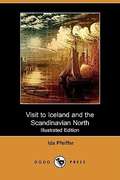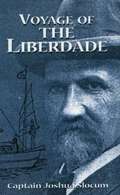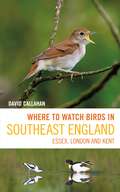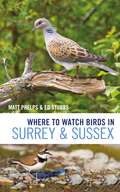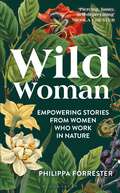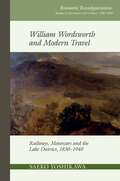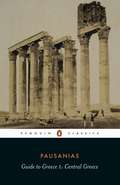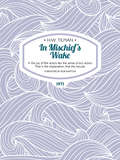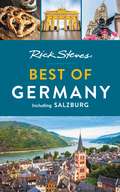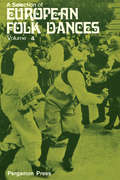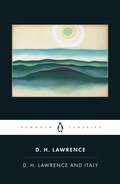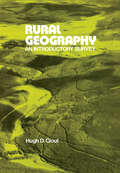- Table View
- List View
Visit to Iceland and the Scandinavian North
by Ida PfeifferA besetting sin of the Icelanders is their drunkenness. Their poverty would probably not be so great if they were less devoted to brandy, and worked more industriously. <P> <P> It is dreadful to see what deep root this vice has taken. Not only on Sundays, but also on week-days, I met peasants who were so intoxicated that I was surprised how they could keep in their saddle. I am, however, happy to say that I never saw a woman in this degrading condition.
Voyage of the Liberdade
by Joshua SlocumIn 1890, the author became the first person to circumnavigate the globe alone. This is the account of one of his lesser-known but no less remarkable sea journeys. From the Publisher: Great 19th-century mariner's thrilling, account of the wreck of his ship off the coast of South America, the 35-foot brave little craft he built from the wreckage, and its remarkable, danger-fraught voyage home. A 19th-century maritime classic brimming with courage, ingenuity, and daring. Easy-to-read and fast-paced.
A Voyage to Abyssinia
by Jerome Lobo Samuel JohnsonHow Father Jerome Lobo brought Christianity to Abyssinia
Where to Watch Birds in Southeast England: Essex, London and Kent (Where to Watch Birds)
by David CallahanThe definitive site guide to a surprisingly bird-rich corner of England – Kent, Essex and the Greater London area.From the deep forests of Kent to the low-lying mudflats, beaches and saltmarshes of the Greater Thames Estuary, this ecologically rich area of England attracts vast numbers of wildfowl and waders. The region boasts many internationally and nationally important reserves including Rainham Marshes and Cliffe Pools, while Dungeness in Kent is one of Britain's best known birding hotspots for vagrant species such as Penduline Tit and Kentish Plover. London itself contains numerous birdwatching sites including Barnes and Woodberry Wetlands, along with some of the best spots in Britain for scarcities such as Lesser Spotted Woodpecker and Black Redstart. From Marsh Harrier and Firecrest to Curlew and Lapwing, there is plenty for birdwatchers to enjoy while exploring the parks, wetlands, woodlands and coast of southeast England. Written by life-long birdwatcher David Callahan, this is the definitive guide to the birding highlights of the region. It contains a comprehensive review of all the major sites and many lesser-known ones, with maps, notes on access, and information on target species and when to visit. Where to Watch Birds in Southeast England is indispensable for any birder exploring the region, or anyone in London wanting to head out to the countryside and enjoy a slice of our rich avian heritage.
Where to Watch Birds in Surrey and Sussex (Where to Watch Birds)
by Matthew Phelps Ed StubbsThis site guide covers the counties of East Sussex, West Sussex and Surrey, including sites in southwest Greater London. From the heaths of Surrey to the chalky grassland of the North and South Downs, the great forests of the Weald and the headlands, shingle beaches and river valleys of England's south coast, these three counties are a bird-rich part of the country, with perhaps the most diverse range of habitats in the country, and all within easy distance of London, the southwest part of which contains birding sites such as Barnes wetland centre.This new book by Matthew Phelps and Ed Stubbs is the definitive guide to the birding highlights of the region. It contains a comprehensive review of all the major sites, and many lesser-known ones, with maps, notes on access, and information on target species and when to visit. Where to Watch Birds in Surrey and Sussex is indispensable for any birder heading to this bird-rich region, or anyone in London who wants to head south to enjoy some of the best birding England can offer.
Wild Woman: Empowering Stories from Women who Work in Nature
by Philippa ForresterAn engaging blend of conservation stories and humorous, personal anecdotes from Philippa Forrester about women who, like her, choose to live and work in the wild.Surviving in the wilderness has long been associated with men, and conservation and environmental biology have traditionally been male-dominated subjects. Yet many remarkable women also choose to live and work in wild and challenging landscapes. In Wild Woman, Philippa Forrester considers the grit and determination required for women to maintain connections to wildlife and shares stories of female conservation heroes and other extraordinary wild women working in nature. Talking to women from around the world, Philippa studies and celebrates what it means to be a wild woman. From the sixteenth-century botanist who was the first woman to circumnavigate the globe to modern-day women responding to bear attacks in Yellowstone, working to rewild reserves in South Africa, photographing Caribou in the Arctic and more, Philippa examines how these women benefit from a life spent in the wilderness and also considers what the natural world gains from them. Relating some of her own experiences from three decades spent travelling around the world and working in some of the wildest places on Earth, Philippa asks: what does it take for a woman to live or work in the wild?
William Wordsworth and Modern Travel: Railways, Motorcars and the Lake District, 1830-1940 (Romantic Reconfigurations: Studies in Literature and Culture 1780-1850 #12)
by Saeko YoshikawaThis book explores Wordsworth’s extraordinary influence on the tourist landscapes of the Lake District throughout the age of railways, motorcars and the First World War. It reveals how Wordsworth’s response to railways was not a straightforward matter of opposition and protest; his ideas were taken up by both advocates and opponents of railways, and through their controversies had a surprising impact on the earliest motorists as they sought a language to describe the liberty and independence of their new mode of transport. Once the age of motoring was underway, the outbreak of the First World War encouraged British people to connect Wordsworth’s patriotic passion with his wish to protect the Lake District as a national heritage – a transition that would have momentous effects in the interwar period, when popular motoring paradoxically brought a vogue for open-air activities and a renewal of romantic pedestrianism. With the arrival of global tourism, preservation of the cultural landscape of the Lake District became an urgent national and international concern. This book explores how patterns of tourist behaviour and environmental awareness changed in the century of popular tourism, examining how Wordsworth’s vision and language shaped modern ideas of travel, self-reliance, landscape and environment, cultural heritage, preservation and accessibility.
The World as I Have Found It
by Mary L. Day ArmsA graduate of the Maryland Institution for the Blind, Mary L. Day published a memoir in 1859 entitled Incidents in the Life of a Blind Girl. In this book, a sequel to her first, she recounts how she traveled throughout the country earning a living through the sale of her memoir. She also writes about meeting her future husband, visiting places of interest, and having numerous adventures on the road. The book closes with several essays on blindness and the education of the blind and with a collection of poems by blind authors.
Guide to Greece: Central Greece
by Pausanias Jeffery Lacey John NewberryWritten in the second century AD by a Greek traveller for a predominantly Roman audience, Pausanias' Guide to Greece is an extraordinarily literate and well-informed guidebook. A study of buildings, traditions and myth, it describes with precision and eloquence the glory of classical Greece shortly before its ultimate decline in the third century. This volume, the first of two, concerns the five provinces of central Greece, with an account of cities including Athens, Corinth and Thebes and a compelling depiction of the Oracle at Delphi. Along the way, Pausanias recounts Greek legends that are unknown from any other source and quotes a wealth of classical literature and poetry that would otherwise have been lost. An inspiration to Byron and Shelley, the Guide to Greece remains one of the most influential travel books ever written.
In Mischief's Wake: In the joy of the actors lies the sense of any action. That is the explanation, that the excuse. (H.W. Tilman: The Collected Edition)
by H.W. Tilman‘I felt like one who had first betrayed and then deserted a stricken friend; a friend with whom for the past fourteen years I had spent more time at sea than on land, and who, when not at sea, had seldom been out of my thoughts.’The first of the three voyages described in In Mischief’s Wake gives H.W. ‘Bill’ Tilman’s account of the final voyage and loss of Mischief, the Bristol Channel pilot cutter in which he had sailed over 100,000 miles to high latitudes in both Arctic and Antarctic waters.Back home, refusing to accept defeat and going against the advice of his surveyor, he takes ownership of Sea Breeze, built in 1899; ‘a bit long in the tooth, but no more so, in fact a year less, than her prospective owner’. After extensive remedial work, his first attempt at departure had to be cut short when the crew ‘enjoyed a view of the Isle of Wight between two of the waterline planks’. After yet more expense, Sea Breeze made landfall in Iceland before heading north toward the East Greenland coast in good shape and well stocked with supplies. A mere forty miles from the entrance to Scoresby Sound, Tilman’s long-sought-after objective, ‘a polite mutiny’ forced him to abandon the voyage and head home.The following year, with a crew game for all challenges, a series of adventures on the west coast of Greenland gave Tilman a voyage he considered ‘certainly the happiest’, in a boat which was proving to be a worthy successor to his beloved Mischief.
Moon Bogotá (Travel Guide)
by Andrew DierMoon Travel Guides: Your World, Your WayExperience the freedom and sheer alegría Colombia's cultural epicenter has to offer with Moon Bogotá.Strategic travel plans with an adaptable week-long itinerary for exploring the city, plus highlights for Boyacá and SantanderesCurated advice from local writer Andrew Dier, who provides his American-expat perspective on his adopted cityFull color detailed maps and photos for exploring on your ownActivities and ideas for every traveler: Taste your way through nouvelle Colombian cuisine, or try puchero or ajiaco at a century-old restaurant. Wander through the Museo del Oro to learn about the indigenous Muiscas, or visit the historic district of La Candelaria. Salsa dance the night away, or discover Bogotá's thriving LGBTQ club scene. Explore the cloud forests, lakes, and alpine plains (or páramos) within a hours journey of the city and visit Laguna de Guatavita, supposedly the location of mythical El Dorado. Escape to nearby Boyacá to see beautifully-preserved colonial towns, or go white-water rafting, caving, or paragliding in the countrysideCurrent background information on the landscape, culture, history, and environment, as well as a handy Spanish phrasebook, all packaged in a book light enough to fit in your carry-onEssential insight for travelers on trekking through jungles, accessing remote mountain ranges, and exploring ancient ruins, with tips for traveling safely and respectfully engaging with the local cultureWith Moon Bogotá's practical tips, myriad activities, and an insiders view, you can plan your trip your way.Expanding your trip? Try Moon Colombia. Country-hopping in South America? Check out Moon Peru or Moon Ecuador & the Galápagos Islands.
Rick Steves Best of Germany: With Salzburg (Rick Steves Travel Guide)
by Rick StevesHit Germany's can't-miss art, sights, and bites in two weeks or less with Rick Steves Best of Germany! Inside you'll find:Strategic advice from Rick Steves on what's worth your time and moneyShort itineraries covering Munich, Bavaria, Rothenburg and the Romantic Road, the Rhine Valley, and Berlin, plus Salzburg, AustriaRick's tips for beating the crowds, skipping lines, and avoiding tourist trapsThe best of local culture, flavors, and haunts, including walks through museums and atmospheric neighborhoodsTrip-planning strategies like how to link destinations and design your itinerary, what to pack, where to stay, and how to get aroundOver 400 full-color pages with maps and vibrant photosSuggestions for side trips to Dachau Memorial, Würzburg, Nürnburg, Burg Eltz, Cologne, Baden-Baden, Frankfurt, Dresden, and HamburgExperience the old-world romance and modern-day excitement of Germany with Rick Steves.Planning a longer trip? Pick up Rick Steves Germany, the classic, in-depth guide to exploring the country.
A Selection of European Folk Dances: Volume 4
by Unknown AuthorA Selection of European Folk Dances, Volume 4 is part of a series of booklets giving the dance sequence and music for a selection of folk dances from various European countries outside the British Isles. Organized into 10 chapters, this book begins with a description of the various holds and basic steps of the dances. Subsequent chapters detail specific dances of various countries including France, Israel, Sweden, Switzerland, and Mexico. Regional variations in steps and music are often numerous and some dances are performed differently in almost every village. This book provides this variety, making this reference valuable to those interested in this performing art.
D. H. Lawrence and Italy
by Tim Parks D. H. Lawrence Anthony Burgess Michael SquiresIn these impressions of the Italian countryside, Lawrence transforms ordinary incidents into passages of intense beauty. Twilight in Italy is a vibrant account of Lawrence's stay among the people of Lake Garda, whose decaying lemon gardens bear witness to the twilight of a way of life centuries old. In Sea and Sardina, Lawrence brings to life the vigorous spontaneity of a society as yet untouched by the deadening effect of industrialization. And Etruscan Places is a beautiful and delicate work of literary art, the record of "a dying man drinking from the founts of a civilization dedicated to life."
Indian Life on the Northwest Coast of North America as seen by the Early Explorers and Fur Traders during the Last Decades of the Eighteenth Century
by Erna GuntherA reconstruction of the Haida and Tlingit cultures of the Pacific Northwest during the late eighteenth and early nineteenth centuries. Drawing on a wide range of evidence, this volume is a carefully researched investigation into the ethnohistory of the Pacific Northwest during the period of European exploration of the region. The book supplements the archeological evidence from the area with a detailed investigation of the journals, diaries, and sketchbooks of Russian, Spanish, and English explorers and traders who reached the region, as well as artifacts that those explorers and traders obtained on their expeditions and that are now held in museums worldwide. In doing so, Gunther's research extends anthropological study of the region a century earlier, and sheds light on the understudied tribal cultures of the Haida and the Tlingit. The volume contains splendid reproductions of contemporary drawings, and appendices mapping the museum locations of artifacts and describing the processes of native technology.
Missionary of Tanganyika 1877-1888
by Edward Coode HoreThis account of an evangelical initiative at Lake Tanganyika was first published in 1892. It looks at Ujiji society and commerce and includes a description and comparison of the peoples that was done for the Anthropological Institute.
Missionary of Tanganyika 1877-1888
by Edward Coode HoreThis account of an evangelical initiative at Lake Tanganyika was first published in 1892. It looks at Ujiji society and commerce and includes a description and comparison of the peoples that was done for the Anthropological Institute.
Rural Geography: An Introductory Survey (Pergamon Oxford Geography Series)
by H. D. CloutDiscusses a series of themes linked to the changing use of the rural environment in the modern world. Although the text emphasises issues in Great Britain it also compares the rural scene in France, North America, Northern Europe and Eastern Europe and has general relevance for other parts of the developed world. A special feature is the wide ranging and detailed bibliography. Suitable for students of geography, sociology, town and country planning.
